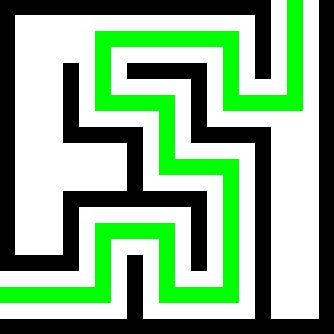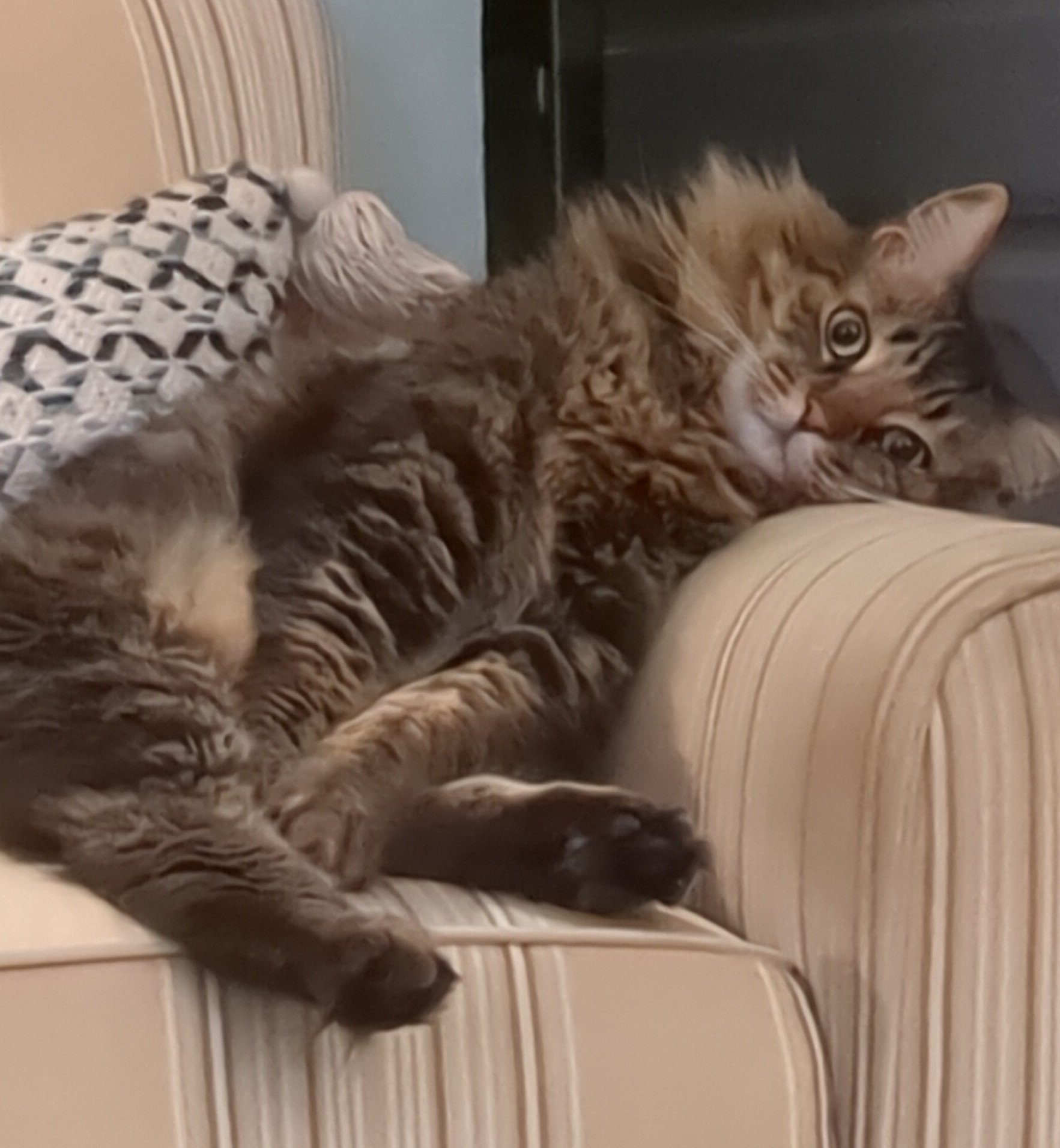The joys of parts with not friendly printing geometry. There’s another cylindrical recess running at 90 degrees to the one that’s visible in this photo.
Apologies for the very obvious layer lines. Harsh direct overhead lighting makes them a lot more obvious. The prints are much better in person, I promise.
Edit: Finished part showing the second cylindrical recess. They’re both dimensionally important, which is why the parts weren’t printed flat.

Living dangerously would mean that you print the same part 20 times at slightly different orientations, put them all in a bag and pick one at random for a structured part.
Any reason you didn’t print them lying down?
Only kinda sorta dangerous, I’m not leaning into chaos random. I’ll update the post with a better view of the final part. The two cylindrical recesses are the dimensionally important features and bridging would hurt that.
My guess would be that they need those shafts smooth, but if the outside is smooth it doesn’t matter as much?
45° is a commonly used angle for printing
gunsstuff actually.45° is a great cheat code for overhangs assuming you can keep the parts on your bed.
Also less likely to crack under the pressure of a reciprocating slide, since they usually crack along layer lines.
What is the part for? What does it do?
It’s the center section of a rebar clamp for a plant support structure in my garden. I’m hoping to get a photo of it installed today.
I was wondering if it was some sort of alignment/clamp for something like pipes or rods, or maybe some sort of bushing/bearing holders (think linear rods). Your tuning looks great btw, look pretty nice even in the worst case lighting conditions, adhesion not an issue doing this way? My dad asked me to print some stuff he designed for his beekeeping tools, has a bearing surface that’s awkward to print accurately, I’m probably going to revisit that with this as inspiration, other than the helper ears I see on the build plate anything else you did?
To ask questions, for the application does dimensional accuracy actually matter? AFAIK rebar isn’t exactly the tightest wrt tolerances (I know flat products, not long products, but knowing what hotroll coils look like I’m assuming it’s similar), could probably have gotten away with a different orientation and could probably have avoided supports (I find arches print nicely). Having said that though, thinking strength might be another reason to print the way you did, face down and you have shear & torsion in between layers, thinking that’s still a concern if you printed it standing, but yeah, just thoughts.
Edit: also spy kapton tape, did you find the bubble insulation made much of a difference? I’m putting what’s basically heat barrier fabric on the interior as a first try, I grabbed some rock wool and bubble insulation but it’s thick enough that I’m mildly concerned with it interfering with the gantry, having everything off for some refurb and wow I forgot just how close everything is, they really didn’t waste space eh?
Your tuning looks great btw, look pretty nice even in the worst case lighting conditions, adhesion not an issue doing this way?
Thanks! I will make a “same print, terrible lighting vs good lighting” post in the next day or two. No, adhesion wasn’t an issue. I run klipper with z calibration, so my first layers are very consistent.
My dad asked me to print some stuff he designed for his beekeeping tools, has a bearing surface that’s awkward to print accurately, I’m probably going to resist that with this as inspiration, other than the helper ears I see on the build plate anything else you did?
Most of what I print is self designed. I do my best to make sure the designs are (reasonably) easy to print. For overhangs, printing a part at 45 degrees is basically a cheat code, but it comes with the tradeoff of more iffy bed adhesion.
I printed these with a skirt and some tree supports to improve stability. Beyond that, I didn’t do anything special and don’t put anything on my bed.
To ask questions, for the application does dimensional accuracy actually matter? AFAIK rebar isn’t exactly the tightest wrt tolerances (I know flat products, not long products, but knowing what hotroll coils look like I’m assuming it’s similar), could probably have gotten away with a different orientation and could probably have avoided supports (I find arches print nicely).
These are ASA parts with 0.3mm high layers. If you haven’t printed ASA before, it’s a bit more melty than PLA. You’re right that rebar isn’t super dimensionally consistent, but a 14mm radius cylinder wouldn’t have printed very well flat.
Having said that though, thinking strength might be another reason to print the way you did, face down and you have shear & torsion in between layers, thinking that’s still a concern if you printed it standing, but yeah, just thoughts.
I don’t think layer lines matter a ton in this particular print. Most of the stress is going to be torque caused by one bar trying to rotate relative to the other bar.
also spy kapton tape, did you find the bubble insulation made much of a difference? I’m putting what’s basically heat barrier fabric on the interior as a first try, I grabbed some rock wool and bubble insulation but it’s thick enough that I’m mildly concerned with it interfering with the gantry, having everything off for some refurb and wow I forgot just how close everything is, they really didn’t waste space eh?
A few answers here.
First, swapping to ACM panels bumped my chamber temps. If you dig through my post history you can find a temp graph comparing before/after. Second, adding a radiant barrier did help, but was less significant than the ACM panels. I do need to do the back panel and want to make my fridge door double pane using one of the stock acrylic sides. Third, I have magnetic panel clips that I modified to give me a bit more space to accommodate the radiant insulation. You would never be able to fit this stuff in with the stock panel attachments.
First try or multiple test prints? Did you manually place each tree support on the half cylindrical overhang? Do you think they were needed, given that the top most point of the half cylinder is the same overhang, or am I seeing a tiny bevel at the point where you reduced the overhang corner?
Looks like you’re building a jig or furniture.
First try. I’m running klipper with z calibration with a bed mesh, so my first layers are very consistent.
I manually painted the trees in two locations. The first was below the cylinder cutouts even start to give the print a touch more stability, but I probably could have gotten away without them. The second was for the small overhang at the top of the cylinder. This is ASA, which tends to sag on overhangs a bit more than PLA. A bevel would have been a great way to eliminate the need for the second set of trees.
The prints are the middle section of a rebar clamp for my garden. I’ll try to post a photo of the completed unit in a day or two. So not a jig per say, but functionally very similar. Good eye!
Seems like they would have printed fine with the arch at the top. The arch might have slight stepping but they would have looked a whole lot better.
I updated the OP. The dimensions in the arch is the feature that matters for this print.
The prints really do look pretty good under normal lighting. The orientation did not impact print quality. Elis has a nice demo of this on his site
The impressiveness of the rest of the print makes the layer lines not even noticeable.



